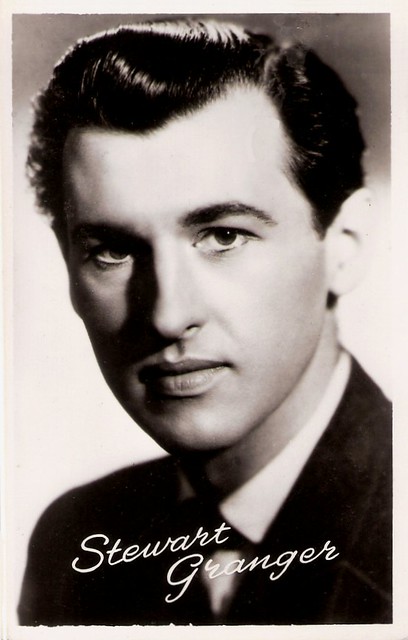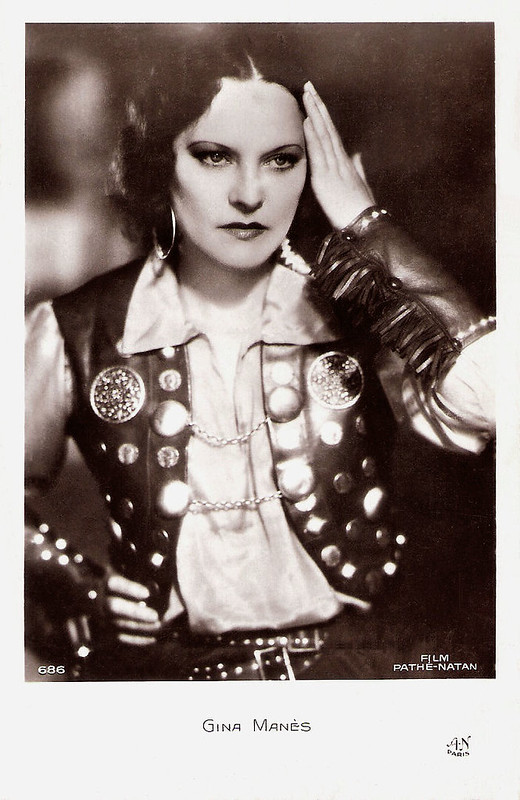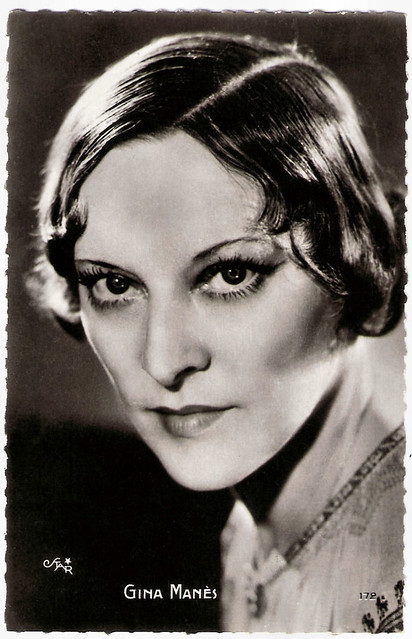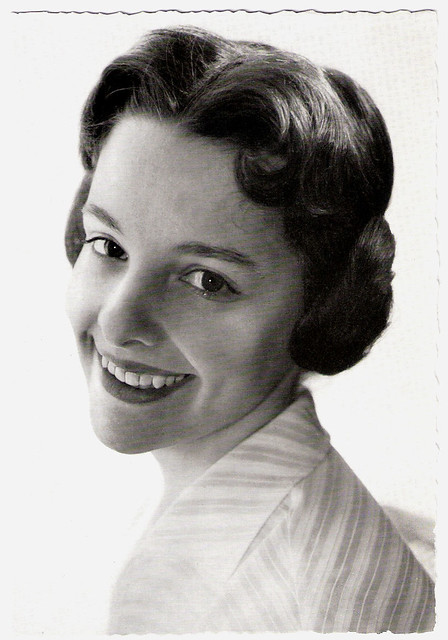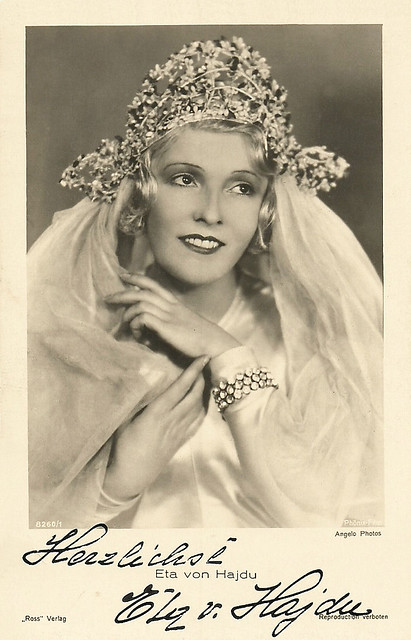German film, TV and stage actor Hans von Borsody (1929-2013) died Monday, 4 November, at his home in Kiel, Germany. During his decades-long career, he was seen in the war drama A Bridge Too Far (1977) and many other films. On stage, he starred as Faust and Cyrano de Bergerac. Borsody was 84 years old.
![Hans von Borsody (1929-2013)]()
German postcard by Franz Josef Rüdel, Filmpostkartenverlag, Hamburg-Bergedorf, no. 2657. Photo: Lilo / Dörfler /Bavaria.
Hans Eduard Herbert von Borsody was born in Vienna, Austria in 1929.
His parents were the film director Eduard von Borsody and the concert pianist and violinist Maria Hochreiter. When Borsody was three, his family moved to Berlin and obtained German citizenship.
Von Borsody came early into contact with the film business, but at his father's request, he started a photography study.
From 1950 to 1952, he studied acting at the Max-Reinhardt-Seminar in Vienna. Later he stood on stage in many German and Austrian cities such as Munich, Vienna, Frankfurt, Dusseldorf, Berlin and Hamburg.
He made his film debut in Don Giovanni/Don Juan (Walter Kolm-Veltée, 1955) featuring Cesare Danova. This musical swashbuckler follows closely the plot of Mozart's opera Don Giovanni.
Thanks to his roles as a jeune premier in films like the Heimatfilm Der Schandfleck/The Disgrace (Herbert B. Fredersdorf, 1956), Hans von Borsody quickly made a name.
He starred in the crime thriller Das Rätsel der grünen Spinne/The Mystery of the Green Spider (Franz Marischka 1960) and the Austrian drama Sturm am Wilden Kaiser/Mountain wind (1963), written and directed by his father Eduard von Borsody.
![Hans von Borsody (1929-2013)]()
East-German postcard by VEB Progress Filmvertrieb, Berlin, no. 2204, 1964. Retail price 0.20 DM.
During the 1960s, Hans von Borsody played in several pan-European co-productions.
He had supporting parts in the war films Marcia o crepa/Commando (Frank Wisbar, 1962), set during the Algerian War and starring Stewart Granger, and Sette contro la morte/The Cavern (Edgar G. Ulmer, 1964) with John Saxon. The latter is a claustrophobic WW II war drama, which chronicles the five months which six soldiers and one woman spent trapped within a deep cave in the Italian mountains.
He rode as a cowboy across the prairie in the Italian Spaghetti Western Buffalo Bill, l'eroe del far west/Buffalo Bill, Hero of the Far West (Mario Costa, 1965) featuring Gordon Scott.
In Germany, he played as Volker von Alzey in the two-part epic sword-and-sorcery fantasy Die Nibelungen (Harald Reinl, 1966-1967), a remake of the silent classic directed by Fritz Lang in 1924.
He became a household name in the German speaking countries as detective Cliff Dexter in the Krimi series Cliff Dexter (1966-1968), which kept millions of European TV viewers spellbound.
In Italy, he also appeared in Omicidio per appuntamento/Date for a Murder (Mino Guerrini, 1966). At AllMovie, Robert Firsching describes the film as a "stylish, flamboyant giallo-thriller clearly influenced by the striking work of genre pioneer Mario Bava".
Von Borsody fought as a rebel against the Romans in Hermann der Cherusker - Die Schlacht im Teutoburger Wald/Massacre in the Black Forest (Ferdinando Baldi, Rudolf Nussgruber, 1967), a historical drama film set in the German frontier in AD 9.
The film centers on Hermann, a chieftain of the Cherusci tribe (in what is now Hesse), who drew three Roman legions into an ambush in the Teutoburg Forest, known as the Battle of the Teutoburg Forest. His co-stars were Antonella Lualdi and Cameron Mitchell.
Scene from Omicidio per appuntamento/Date for a Murder (Mino Guerrini, 1966). Source: Роман Мацнев (YouTube).
During the 1970s and 1980s, Hans von Borsody played in several German TV films and series and in a few international films.
Among these films were the war epic A Bridge Too Far (Richard Attenborough, 1977) and the thriller Bloodline (Terence Young, 1979), based upon the novel by Sidney Sheldon, and starring Audrey Hepburn.
His role of a lifetime was Cyrano de Bergerac, which Von Borsody performed on stage in Vienna and Andernach. It was the role about which he had already dreamed during his studies at the Max-Reinhardt-Seminar.
Hans von Borsody died in Kiel, Germany in 2013. He was 84.
He is survived by his fourth wife Karin and his daughters Suzanne and Cosima. After his first marriage with actress Rosemarie Fendel ended, he was married to actresses Alwy Becker and Heide Keller.
Suzanne von Borsody, his daughter with Rosemarie Fendel, is an award winning actress. Her half-sister Cosima von Borsody, his daughter with Alwy Becker, also works for the camera.
Trailer for Die Nibelungen - Teil II: Kriemhilds Rache (Harald Reinl, 1967). Source: R6dw6C (YouTube).
Sources: Robert Firsching (AllMovie), T Online (German), AllMovie, Wikipedia (German and English), and IMDb.

German postcard by Franz Josef Rüdel, Filmpostkartenverlag, Hamburg-Bergedorf, no. 2657. Photo: Lilo / Dörfler /Bavaria.
Jeune Premier
Hans Eduard Herbert von Borsody was born in Vienna, Austria in 1929.
His parents were the film director Eduard von Borsody and the concert pianist and violinist Maria Hochreiter. When Borsody was three, his family moved to Berlin and obtained German citizenship.
Von Borsody came early into contact with the film business, but at his father's request, he started a photography study.
From 1950 to 1952, he studied acting at the Max-Reinhardt-Seminar in Vienna. Later he stood on stage in many German and Austrian cities such as Munich, Vienna, Frankfurt, Dusseldorf, Berlin and Hamburg.
He made his film debut in Don Giovanni/Don Juan (Walter Kolm-Veltée, 1955) featuring Cesare Danova. This musical swashbuckler follows closely the plot of Mozart's opera Don Giovanni.
Thanks to his roles as a jeune premier in films like the Heimatfilm Der Schandfleck/The Disgrace (Herbert B. Fredersdorf, 1956), Hans von Borsody quickly made a name.
He starred in the crime thriller Das Rätsel der grünen Spinne/The Mystery of the Green Spider (Franz Marischka 1960) and the Austrian drama Sturm am Wilden Kaiser/Mountain wind (1963), written and directed by his father Eduard von Borsody.

East-German postcard by VEB Progress Filmvertrieb, Berlin, no. 2204, 1964. Retail price 0.20 DM.
Stylish, Flamboyant Giallo-Thriller
During the 1960s, Hans von Borsody played in several pan-European co-productions.
He had supporting parts in the war films Marcia o crepa/Commando (Frank Wisbar, 1962), set during the Algerian War and starring Stewart Granger, and Sette contro la morte/The Cavern (Edgar G. Ulmer, 1964) with John Saxon. The latter is a claustrophobic WW II war drama, which chronicles the five months which six soldiers and one woman spent trapped within a deep cave in the Italian mountains.
He rode as a cowboy across the prairie in the Italian Spaghetti Western Buffalo Bill, l'eroe del far west/Buffalo Bill, Hero of the Far West (Mario Costa, 1965) featuring Gordon Scott.
In Germany, he played as Volker von Alzey in the two-part epic sword-and-sorcery fantasy Die Nibelungen (Harald Reinl, 1966-1967), a remake of the silent classic directed by Fritz Lang in 1924.
He became a household name in the German speaking countries as detective Cliff Dexter in the Krimi series Cliff Dexter (1966-1968), which kept millions of European TV viewers spellbound.
In Italy, he also appeared in Omicidio per appuntamento/Date for a Murder (Mino Guerrini, 1966). At AllMovie, Robert Firsching describes the film as a "stylish, flamboyant giallo-thriller clearly influenced by the striking work of genre pioneer Mario Bava".
Von Borsody fought as a rebel against the Romans in Hermann der Cherusker - Die Schlacht im Teutoburger Wald/Massacre in the Black Forest (Ferdinando Baldi, Rudolf Nussgruber, 1967), a historical drama film set in the German frontier in AD 9.
The film centers on Hermann, a chieftain of the Cherusci tribe (in what is now Hesse), who drew three Roman legions into an ambush in the Teutoburg Forest, known as the Battle of the Teutoburg Forest. His co-stars were Antonella Lualdi and Cameron Mitchell.
Scene from Omicidio per appuntamento/Date for a Murder (Mino Guerrini, 1966). Source: Роман Мацнев (YouTube).
His Role of a Lifetime
During the 1970s and 1980s, Hans von Borsody played in several German TV films and series and in a few international films.
Among these films were the war epic A Bridge Too Far (Richard Attenborough, 1977) and the thriller Bloodline (Terence Young, 1979), based upon the novel by Sidney Sheldon, and starring Audrey Hepburn.
His role of a lifetime was Cyrano de Bergerac, which Von Borsody performed on stage in Vienna and Andernach. It was the role about which he had already dreamed during his studies at the Max-Reinhardt-Seminar.
Hans von Borsody died in Kiel, Germany in 2013. He was 84.
He is survived by his fourth wife Karin and his daughters Suzanne and Cosima. After his first marriage with actress Rosemarie Fendel ended, he was married to actresses Alwy Becker and Heide Keller.
Suzanne von Borsody, his daughter with Rosemarie Fendel, is an award winning actress. Her half-sister Cosima von Borsody, his daughter with Alwy Becker, also works for the camera.
Trailer for Die Nibelungen - Teil II: Kriemhilds Rache (Harald Reinl, 1967). Source: R6dw6C (YouTube).
Sources: Robert Firsching (AllMovie), T Online (German), AllMovie, Wikipedia (German and English), and IMDb.









